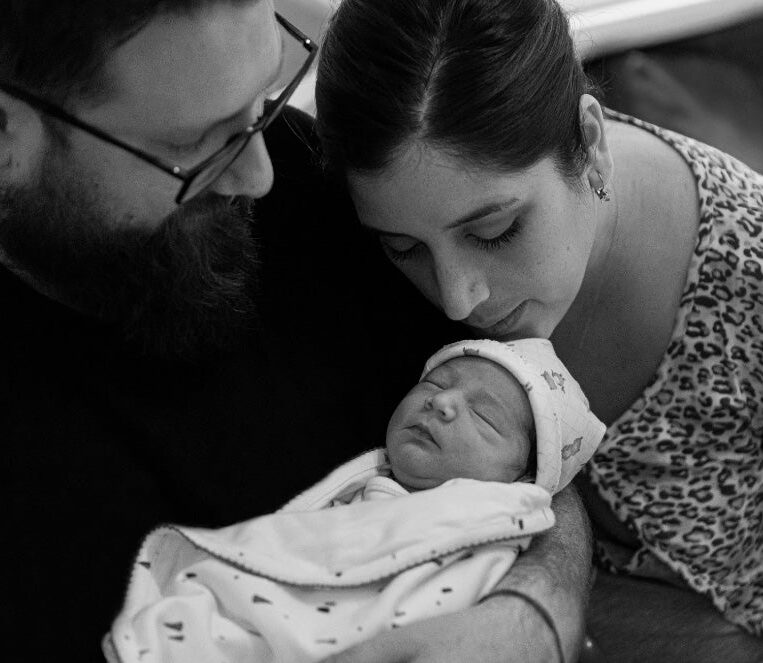
Newborn_parents
Reversing Infertility – Is it finally possible?
By Wade Starr
We should be dead at 40.
As at 2021 the combined life expectancy of men and women in Australia is approximately 84.5 years. A boy born today expected to live 81.2 years whilst a girl born today expected to live 85.3 years. There are a number of factors to take into consideration to arrive at these numbers including gender, your socioeconomic status, and geographical location. Australia really is the lucky country, the same combined life expectancy of an adult in Nigeria in 2021 was only 52.7 yrs.
Now go back some 224 years to the year 1800. The combined life expectancy of an adult globally was only 29 years, in Oceania (Australia) 35 years, the Americas 35 years and Africa 26 years. The factors affecting life expectancy and survival back then were very different – nutrition, disease, violence, living conditions and lack of medical knowledge. Common causes of death were infectious diseases, pneumonia, tuberculosis, and influenza. Additionally, infant / child mortality rates were also really high, all affect mortality rates.
So is it possible for natural evolution to occur for us to more than double our life expectancy in just 224 years. Highly unlikely, this type of evolution takes 1000’s or 10,000’s years.
The main factors that have contributed to the increase in life expectancy since 1800’s include – Improved healthcare, Improved public health measures, Improved nutrition, Safer working conditions, Reduction in smoking, Advances in disease prevention and treatment.
So, if we remove all the above-mentioned factors keeping us living longer today and are unassisted / unaided by modern medicine and technology – biologically we are only meant to live to approximately 40 years of age.
No matter how good or advanced our healthcare, nutrition, working conditions, or developments in disease prevention and treatment they have little effect on our underlying cellular or molecular make-up…. We should be dead at 40.
Reproductive Life vs Cultural Infertility
The following is an outline of the significant difference between our natural Reproductive Life and todays Cultural Infertility.
Female naturally intended Reproductive Life
- Females born with a finite number of eggs – unlike men who continually produce sperm.
- Most Fertile at age 19/20.
- From 20’s – females Fertility slowly declines until early 30’s
- Drops away suddenly in mid-30’s …
- Beyond 40 years of age … not real promising… perimenopausal – menopause.
- This biology aligns with our Fundamental Biology.
Cultural Infertility
- Todays reproductive life and the resulting Cultural Infertility.
- In many western societies many teenage girls avoid getting pregnant through the use of contraception… this is known as Cultural Infertility.
- Contraception often progressing through the 20’s and beyond their 30’s.
- For a variety of reason women in Australia are not having their first child until 31.3 years of age.
- But as mentioned above, fertility slowly declines from mid 20’s until early 30’s.
The reality is – when fertility is at its greatest decline (mid 30’s on) Australian women are having their children – which is towards the end of their biological Reproductive Life cycle … it’s all arse about.
If we now bring our newly established “Biological Life Expectancy of 40” back into the picture things look very different. By age 20, we are at the half way point of our projected BIOLOGICAL LIFE SPAN and by that age we should have passed on all our good gene’s to the next generation.
Additionally, at 20 your body will start experiencing the onset of Ageing. Won’t notice it because much of this aging starts at a cellular level … until you start experiencing or seeing the signs and symptoms of ageing.
- Energy levels dropping
- Trouble staying awake all day
- Brain Fog / Memory issues
- Distracted and Lose concentration when performing a task
- Sleep Patterns change
- In terms of biological Reproductive Life = eggs and sperm are aging.
NAD and our Body
NAD stands for Nicotinamide Adenine Dinucleotide, it’s a natural molecule that’s found in every single cell in our body, Including sperm and eggs. It’s importance is known for coordinating over 400 different reactions and processes in the body.
How important is it – Without NAD in your body – you would be dead in 30 secs.
NAD has 2 key functions:
- Energy – It is the energy source for every cell in your body. Every cell has mitochondria some more than others – liver 100’s, muscles 1000’s, brain cells (neurons) up to 5000. These Mitochondria produce the energy every cell needs to perform its specific task – Muscle cells, neurons, digestive cells, etc.
NAD is the fuel for your mitochondria – It’s what the Mitochondria need to produce the Energy for the cells. Car analogy – Mitochondria = Car & NAD = Petrol
- Cellular Health –Cell Repair and Maintenance – NAD keeps cells healthy by coordinating a lot of cellular maintenance and repair processes. This is important because your cells are exposed to up to 11,500 different forms of DNA damage (Helbock 1998) every day.
Cell Repair and Maintenance – Includes keeping eggs and sperm healthy and of good quality.
But there’s a significant problem developing in the background. Your Body’s ability to produce natural NAD drops by 50% every 20 years from birth. By age 20 – Natural NAD production is down to 50% from original levels, by age 30 it’s down to 37.5% from original levels and by the age of 40 your body only has access to 25% from original levels. All this at a time when your cells need more energy to perform and function properly.
With less NAD available there’s less DNA Repair going on, and a reduction in cellular health and functionality throughout the entire body. This means your cells are not functioning as they should the result of mitochondrial dysfunction. (48% of people under 40 have early onset mitochondrial dysfunction). This includes the health, functionality of eggs and sperm with the biggest impact on egg and sperm quality.
Certain cells have more mitochondria and hence a higher demand for the gradually declining levels of NAD, these include the heart, muscles, liver, brain. Unfortunately, beyond 20 – 25 yrs of age our eggs and sperm are no longer a priority for the distribution of available of NAD.
The impact of declining NAD on the Female Egg
Like every cell in the body .. the female ovary and eggs also contain Mitochondria. The mitochondria play a critical role in oocyte maturation and fertilization with NAD being the fuel required to ensure the Mitochondria in the oocyte/egg performs at optimal levels.
As previously mentioned we know NAD levels drop significantly from age 20. If there isn’t enough NAD for the mitochondria in the eggs, they don’t function properly and this affects the quality of the egg.
Subsequently, the eggs become more prone DNA damage, but there’s not enough NAD to activate DNA repair pathways, so egg quality declines in a vicious cycle.
Poorly functioning mitochondria or Mitochondrial Dysfunction often leads to the production of free radicals and Oxidative stress. Oxidative stress is among the principal factors that affect oocyte quality, leading to oocyte aging and a decline in fertility.
Low levels or diminished levels of NAD lead to age-related mitochondrial (mt) DNA instability in oocyte and sperm. Which can then lead to an increased risk of infertility, miscarriage, and birth defects. Collectively this all has a significant effect on the development of oocyte dysfunction and the overall quality of the egg and sperm – also known as Age Related Infertility.
Does increasing your levels of NAD Improve Fertility Outcomes?
There have been a number of studies (mostly animal & some human studies) on NAD and its impact on Ooctyes/Eggs, fertilization, embryo development and pregnancy.
Some of the outcomes in mice studies included;
- Increased levels of NAD+ in Ovaries and eggs.
- Positive fertilization rates
- Increased Oocyte quality.
- Improved blastocyst quality
Reminder, this was Mice Model research, however, the concluding summary statements of the paper states … “These findings suggest that late-life restoration of NAD+ levels represent an opportunity to rescue female reproductive function in mammals”.
Replenishing NAD levels
Early research on replenishing NAD levels and the effects on Oocyte Quality look really promising.
We know a drop in NAD affects the quality and functionality of all cells, including egg and sperm cells. So, if replenish and increase NAD levels through-out the body could we potentially improve the quality and functionality of all cells.
If you are improving egg quality you are potentially improving fertility outcomes.
NAD supplementation in available in many different forms and applications:
- NMN, NR or NAD capsules / tablets
- NMN, NR or NAD powders
- NAD IV Drips/Infusions
- NAD Intramuscular injections
A WARNING – NOT ALL NAD SUPPLEMENTS ARE THE SAME AND CAN CAUSE MORE HARM.
For more information on the correct NAD supplementation to use and the risks of using older 1st generation NAD boosters like NMN, NR and NAD IV Drips go to the BioClinical.com.au website or read the following blog post – NMN & NR: Untold Truths and the Rise of Next Generation NAD+’s via this link – https://shorturl.at/nRUZ0
Final Word
Remember, females are most fertile 19 / 20 yrs and biological at their Reproductive best between 20 – 30. So if it’s possible start trying for family much earlier.
But in todays society this approach to pregnancy generally isn’t practical, feasible or a realistic probability. If this is the case, your case, then be sure to look after the quality of your eggs and sperm. This can be achieved through NAD supplements.
This also doesn’t mean waiting until you’re 30 and thinking of starting a family before commencing with NAD boosting supplements. If you’re planning for parenthood in the future, start preparing for your pregnancy from as early as 25 years … start restoring levels of NAD and maintain the quality of your eggs and sperm.

